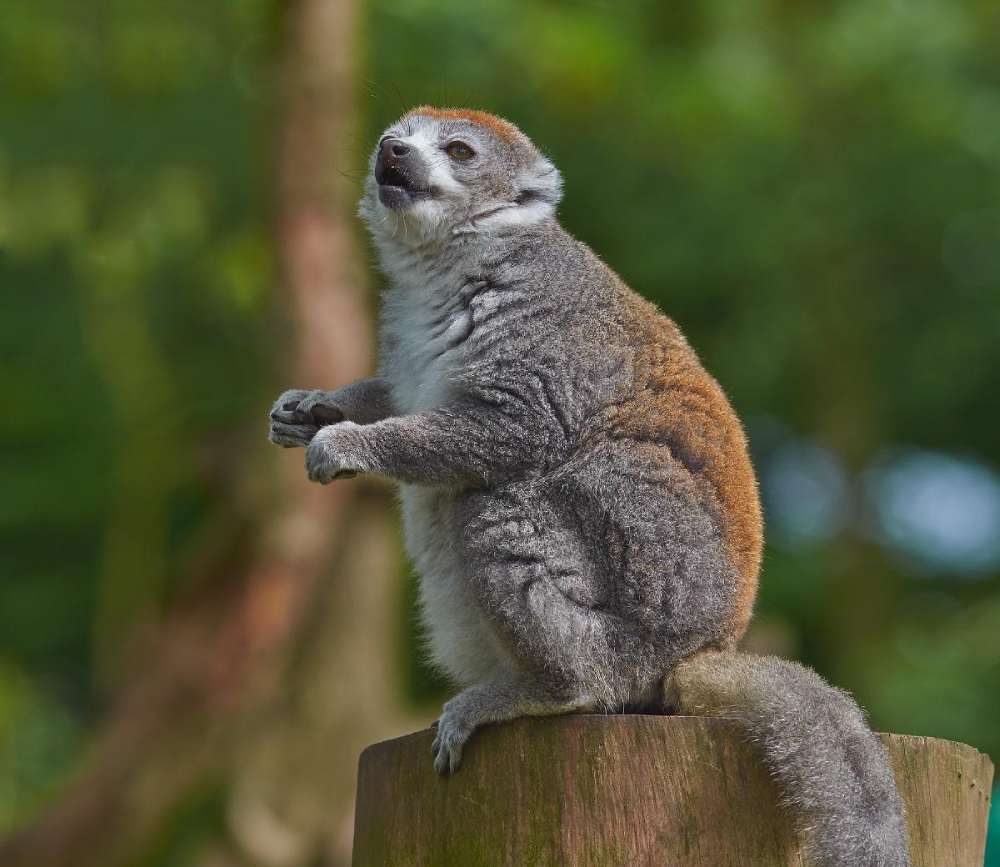Hidden within the lush, tropical rainforests of Madagascar lies a treasure trove of biodiversity, where unique species thrive in isolation from the rest of the world. Among these captivating creatures is the Lesser Bamboo Lemur (*Hapalemur griseus*), a small and elusive primate that holds a special place in the heart of Madagascar’s diverse ecosystem.
Introduction to the Lesser Bamboo Lemur
The Lesser Bamboo Lemur, also known as the Gray Bamboo Lemur, is a member of the Lemuridae family, endemic to the eastern rainforests of Madagascar. With its distinctive gray-brown fur and large, expressive eyes, this arboreal mammal captures the imagination of researchers and nature enthusiasts alike.
Taxonomy and Classification
Scientifically classified within the genus Hapalemur, the Lesser Bamboo Lemur is further divided into two recognized subspecies: Hapalemur griseus griseus and Hapalemur griseus alaotrensis. These lemurs are part of the broader Lemuridae family, which includes other lemurs such as the iconic Ring-tailed Lemur (*Lemur catta*).
Habitat and Distribution
The natural habitat of the Lesser Bamboo Lemur primarily consists of the dense bamboo forests and secondary growth areas of Madagascar’s eastern rainforest belt. These lemurs have a relatively restricted range, with populations found in fragmented pockets across the island, particularly in the regions of Ranomafana National Park, Andasibe-Mantadia National Park, and other protected areas.

Behavior and Ecology
As their name suggests, Lesser Bamboo Lemurs specialize in their diet, predominantly feeding on bamboo shoots, leaves, and occasionally fruits. This dietary preference sets them apart from many other lemur species and underscores their crucial role in shaping the dynamics of Madagascar’s bamboo ecosystems.
These lemurs are primarily arboreal, spending much of their time in the canopy where they forage for food and seek shelter from predators. They are known for their agile movements among the bamboo branches, displaying remarkable balance and coordination.
Reproduction and Life Cycle
Lesser Bamboo Lemurs typically live in small social groups composed of a breeding pair and their offspring. Breeding usually occurs during the rainy season, with females giving birth to a single offspring after a gestation period of around 120 days.
Young lemurs are dependent on their mothers for nourishment and protection during the early stages of life. As they mature, they gradually learn essential skills for survival, such as foraging techniques and social behaviors, from their parents and other group members.
Conservation Status and Threats
Despite their intrinsic ecological value, Lesser Bamboo Lemurs face numerous threats to their survival, primarily due to habitat loss and fragmentation caused by human activities such as logging, agriculture, and charcoal production. Additionally, they are susceptible to predation by introduced species such as feral dogs and cats.
As a result of these pressures, the International Union for Conservation of Nature (IUCN) lists the Lesser Bamboo Lemur as “Endangered,” highlighting the urgent need for conservation efforts to protect both their habitats and populations.
Conservation Efforts
Various conservation organizations and researchers are actively engaged in efforts to safeguard the future of the Lesser Bamboo Lemur and its habitat. These initiatives include habitat restoration projects, community-based conservation programs, and research aimed at better understanding the lemurs’ ecological requirements and behavior.
Furthermore, ecotourism initiatives centered around lemur watching have emerged as a sustainable means of generating income for local communities while promoting the conservation of these charismatic primates.
Conclusion
The serves as a poignant symbol of Madagascar’s rich biodiversity and the challenges it faces in the modern world. As custodians of this fragile ecosystem, it is our collective responsibility to ensure the continued survival of this enigmatic primate and the myriad other species that call Madagascar home.
Through concerted conservation efforts, public awareness campaigns, and sustainable development practices, we can strive to preserve the natural heritage of Madagascar for generations to come, allowing the Lesser Bamboo Lemur and its fellow inhabitants to thrive in harmony with their environment.









